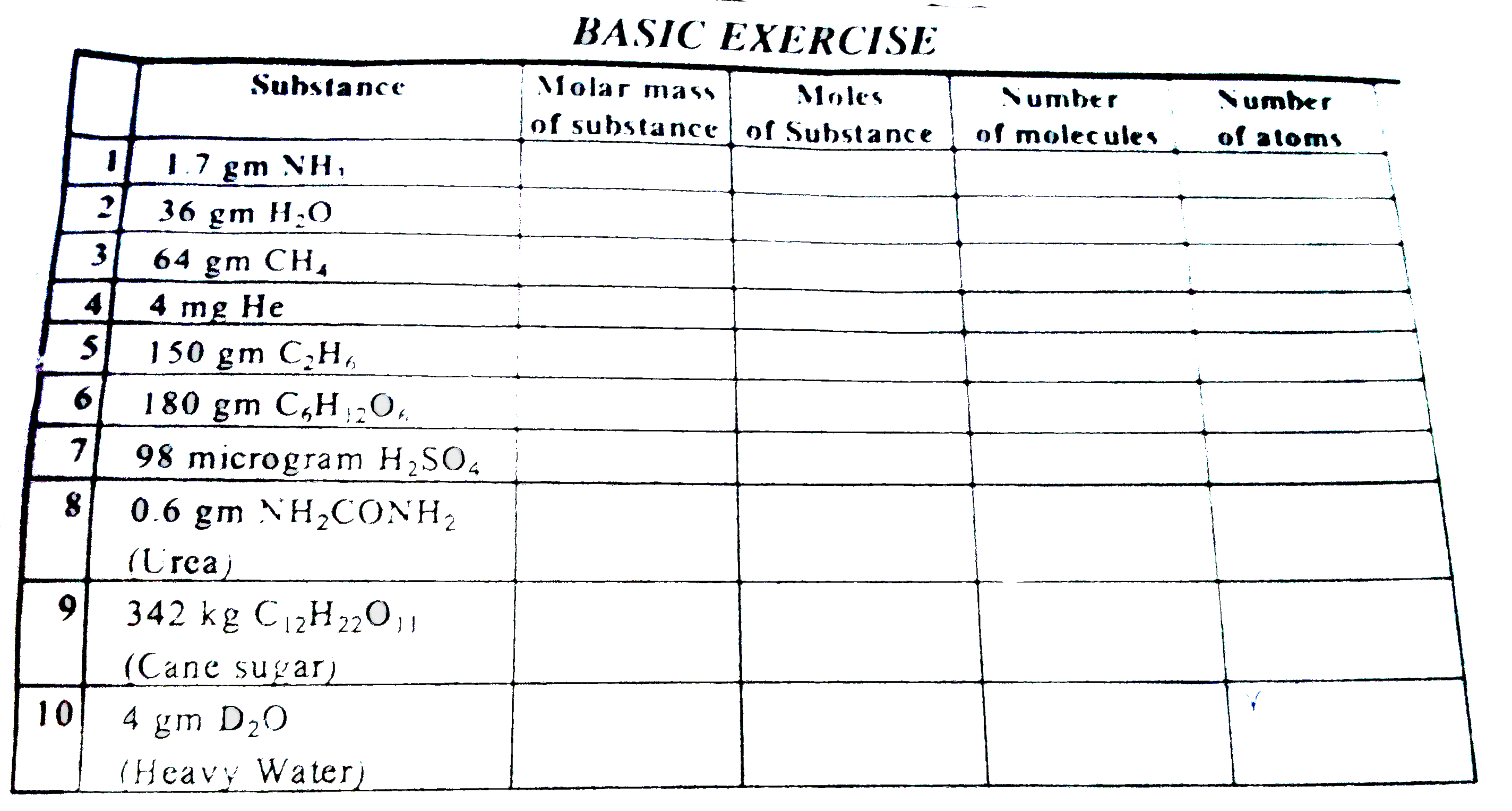For the reaction : A⇔nB, if 'a' mole of A is taken initially and 'x' moles of A get dissociated at equililbrium. What is the value of degree of dissociation?
(xan)
ax
(ax)n
(xa)
The correct Answer is:D
To find the degree of dissociation for the reaction A⇌nB, we can follow these steps:
Step 1: Understand the concept of degree of dissociation
The degree of dissociation (α) is defined as the fraction of the initial amount of a substance that has dissociated at equilibrium. It is expressed mathematically as:
α=Dissociated molesInitial moles
Step 2: Identify initial moles and dissociated moles
In this case, we are given:
- Initial moles of A = a
- Moles of A that get dissociated at equilibrium = x
Step 3: Substitute the values into the formula
Using the formula for degree of dissociation, we can substitute the values we identified:
α=xa
Step 4: Conclusion
Thus, the degree of dissociation (α) for the reaction A⇌nB is:
α=xa
The degree of dissociation (α) is defined as the fraction of the initial amount of a substance that has dissociated at equilibrium. It is expressed mathematically as:
α=Dissociated molesInitial moles
In this case, we are given:
- Initial moles of A = a
- Moles of A that get dissociated at equilibrium = x
Using the formula for degree of dissociation, we can substitute the values we identified:
α=xa
Thus, the degree of dissociation (α) for the reaction A⇌nB is:
α=xa
Topper's Solved these Questions
- CHEMICAL EQUILIBRIUMBOOK - VMC MODULES ENGLISHCHAPTER - CHEMICAL EQUILIBRIUMEXERCISE - ENABLE
49 Videos
- CHEMICAL EQUILIBRIUMBOOK - VMC MODULES ENGLISHCHAPTER - CHEMICAL EQUILIBRIUMEXERCISE - EFFICIENT
50 Videos
- CHEMICAL EQUILIBRIUMBOOK - VMC MODULES ENGLISHCHAPTER - CHEMICAL EQUILIBRIUMEXERCISE - JEE Advanced (Archive)
28 Videos
- CHEMICAL BONDING-I & IIBOOK - VMC MODULES ENGLISHCHAPTER - CHEMICAL BONDING-I & IIEXERCISE - JEE Advanced (Archive)
98 Videos
- CHEMICAL KINETICS BOOK - VMC MODULES ENGLISHCHAPTER - CHEMICAL KINETICS EXERCISE - JEE Advanced (Archive)
52 Videos
Similar Questions
What is degree of dissociation?
View SolutionFor the dissociation of gaseous HI,2HI(g)⇔H2(g)+I2(g). If 2 moles of HI are taken initially and 20% HI is dissociated at equilibrium then the value of Kc in a 1 litre flask at 300K will be
View SolutionFor the reaction : C(Graphite)+CO2(g)⇔2CO(g). At equilibrium the mole precent of CO is equal to 50% in gas phase. What is the degree of dissociation, x. (Assume equal number of moles of C(graphite) and CO2 at the start)
View Solution
A→2B+C
3B→2D
Find moles of D produced if initially 3 moles of A are taken.
View SolutionWhat is pH of pure water whose is degree of dissociation 18×10−9?
View SolutionHA is a weak acid. The pH of 0.1 M HA solution is 2. What is the degree of dissociation (α) of HA ?
View SolutionFor the reaction, x+y↔2z initially 1 mole of x, 1.5 mole of y & 0.5 mole of z are taken, then at equilibrium 1 mole of z is obtained . If Keq=X/15 then , find the value of X.
View SolutionFor the reaction PCl5⇔PCl3+Cl2, Supposing at constant temperature, if the volume is increased 16 times the initial volume, the degree of dissociation for this reaction will becomes:
View SolutionFor the reaction :
7A+13B+15C⇒17P
If 15 moles of A, 26 moles of B and 30.5 moles of C are taken
initially, then limiting reactant is:
View SolutionIn the following reaction, 3A(g)+B(g)⇔2C(g)+D(g), Initial moles of B is double at A . At equilibrium, moles of A and C are equal. Hence % dissociation is :
View Solution
